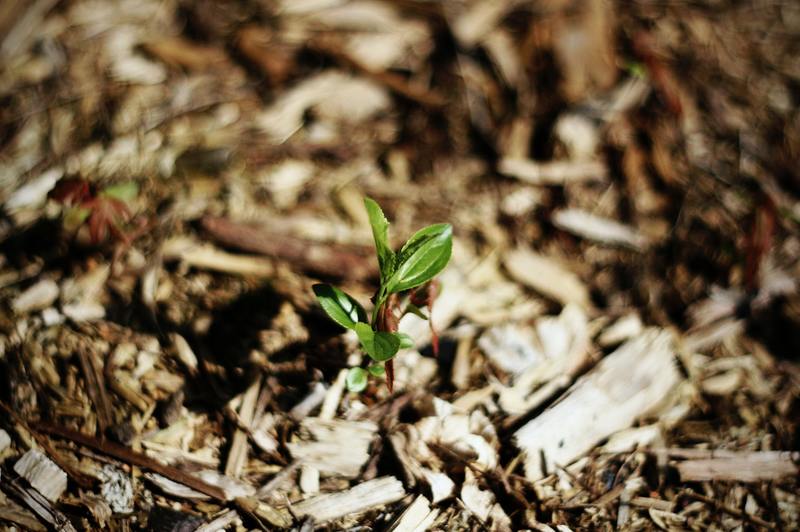If you spend most of your time tending your garden, you’ve probably wondered how to get rid of mold in mulch. It is not a good sight and only has disadvantages to the landscape and plant health.
The great news is there are methods that you can follow to remove this from your yard safely. Aside from that, you will also learn how to prevent its growth in the future, so stay tuned!

What Is Mulch?
Mulch is a material that is often spread out or laid over the soil’s surface. Garden enthusiasts are more familiar with this, as they use it to hide exposed soil on gardens and flower beds.
There are several types of mulch available for use. It includes organic and synthetic mulch.
The types of organic mulch are the following:
- Bark (shredded or chipped)
- Pine needles
- Grass clippings
- Shredded leaves
- Straw
- Newspapers
Synthetic mulch:
- Black plastic
- Landscape fabric
- Stone
- Gravel
The main purpose of mulch is to protect the soil structure from excessive sunlight, but they can also act as a natural fertilizer, given that they are organic and decomposable. Drier and woodier mulch decompose slower, and they will also give fewer nutrients to the soil.
The benefits of mulch in landscaping and gardening other than sunlight protection include:
- Insulation
- Water retention
- Weed prevention
You should know where you are getting your mulch, as some can contain harmful weed seeds to your plants. Chemicals can also contaminate your vegetation and be sure to assess your mulch as each type has its use.
Why Does Mold Grow On Mulch?
Also referred to as “slime mold” by other people, fungus grows on mulch when the conditions are damp, and the bacteria start to feed on it. As they grow larger, they will release spores to nearby areas until they develop visible patches of mold that come in yellow, brown, black, white, and orange colors.
Usually, around 77 to 86 degrees Fahrenheit is the ideal temperature for mold growth. You can only stop the growth by digging the roots and drying them out using home remedies such as vinegar.
Mulch fungus is mostly harmless and not a severe problem, but it would still be best to get rid of it. In some cases, they produce spore masses with unpleasant odors that can attract insects and flies.
How Does Mulch Mold Spread?
Mold is generally easy to spread without help, but some external factors can also contribute to its further expansion to nearby areas. The following factors are:
- Insects
- Water
- Wind
- Animals
- Natural mulch movement
Through these elements, mold spores can travel from one place to another and start a new growth where it settles.
If you have pets, it is risky to tolerate these kinds of mold growth as it can cause diseases and even death due to poisoning. You should know how to keep pets away from plants to avoid such situations.
Is Mold In Mulch Dangerous To Plants?
As mentioned before, mold in mulch is not dangerous. You can even touch it without consequences, although it is not recommended.
On the other hand, some molds can be dangerous to plants, and one example of this is the white mold. You can check out this article to know more about what causes white mold on plants.
Mold can compromise the landscape’s appearance or pose a health risk for people with sensitivity to it. Some specific types of fungus can also be dangerous when consumed, such as stinkhorns and other mushrooms.
How To Remove Mold From Mulch
There are three methods you can try to remove mold and permanently prevent its growth from your mulch. These includes:
- Drying out
- Using vinegar
- Digging up the roots
Method #1. Drying out the mold
It is essential to note that this method is not practical for all climates. Humid areas are more likely to have moisture and water retention on the soil.
If there are existing molds in the mulch, you can kill it by drying out its growing area. Prevent overwatering your plants and only do so if necessary.
Method #2. Using vinegar
First, you need to create a solution of one part vinegar to two parts of water. Put it in a spray bottle so the application will be easier.
The acidity of the vinegar can weaken the mold structure and eventually kill it. However, this may take a few times as it is not an instant solution to mold problems.
As much as vinegar can kill most molds, it can also have harmful effects on some plants. Be sure only to spray the moldy area and not exactly on or near your plants.
Method #3. Digging up the roots
This method is perhaps the most effective and safest way to get rid of mold in mulch. Before starting, be sure that you are wearing the proper protection to avoid harmless chemicals and inhaling mold spores from the air near the colony.
Moving mature mold from mulch also risks spreading more spores into the air, so it would be a great idea to cover it with a plastic bag during and after removal.
Make sure that you get rid of the mold right from the roots and clean the area afterward. Although some mold and fungi have bright colors that can be fun to look at, leaving them alone is not always safe.
Conclusion
It is not that complicated to learn how to get rid of mold in mulch. If you find them annoying, there are certain things that you can do without the help of a professional.
By following the provided methods in this article, you will be able to keep your garden mulch beautiful, safe, and mold-free!
